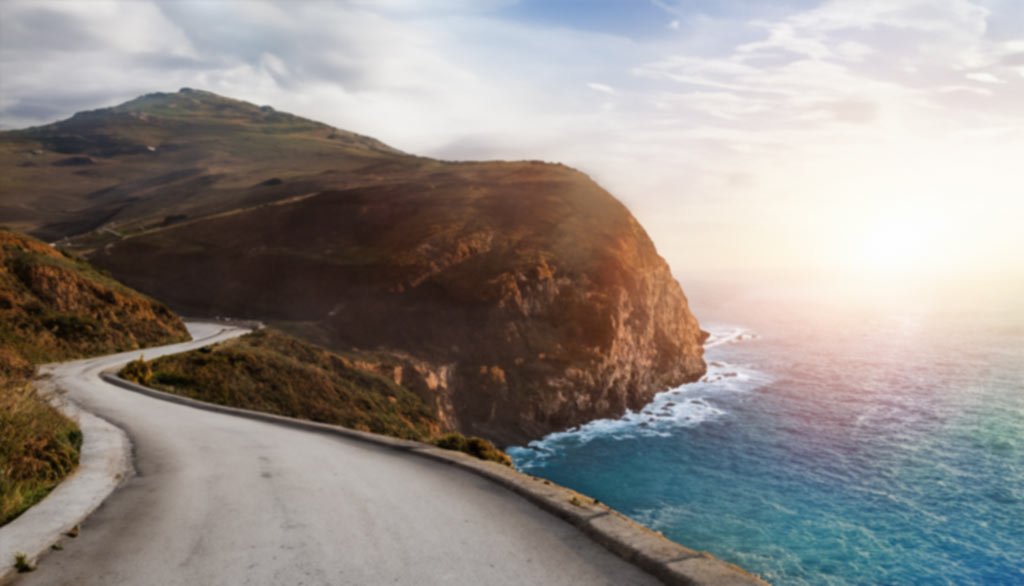Gavdos, an island steeped in history and myth, is a hidden gem in the Mediterranean Sea. Known as the southernmost point of Europe, it is a place where time seems to stand still, offering a unique blend of natural beauty, historical significance and cultural richness. The history of Gavdos is as captivating as its landscape. Archaeological findings suggest that the island has been inhabited since the Neolithic period. Over the centuries, it has seen the rise and fall of various civilisations, including the Minoans, Romans and Byzantines. Each of these cultures has left its mark, contributing to the rich tapestry of Gavdos’ history. One cannot discuss Gavdos without talking about the myths surrounding it. According to Greek mythology, this is where the goddess Calypso resided. She held the hero Odysseus captive on this island for seven years, as narrated in Homer’s epic, ‘The Odyssey’. This tale adds a layer of enchantment to Gavdos, making it a place where history and myth intertwine. The attractions of Gavdos are as diverse as they are numerous. The island’s lighthouse, one of the oldest in the Mediterranean, offers breathtaking panoramic views. With its quaint charm, the Church of Agios Ioannis is another must-visit. For those interested in archaeology, the ruins of the Roman era, including the Roman tombs and the old Saracen pirate lair, offer a glimpse into the island’s past. Gavdos is also home to some of the most beautiful beaches in Greece. The pristine sands of Agios Ioannis, voted as one of the best beaches in the world, are a sight to behold. Potamos Beach, with its golden sand and turquoise waters, is another visitor favourite. For those seeking solitude, the secluded Tripiti Beach, located at the southernmost tip of Europe, offers a peaceful retreat.
The best way to reach Gavdos is by ferry from the port of Sfakia in Crete, with two main ferry companies, ANENDYK and Sfakia Lines, operating regular services. There are limited options for accommodation on the island, but some of the best places to stay include Gavdos Panorama Rooms & Studios, Princess Hotel & Restaurant, Metochi Gavdos, Sofia Rooms Gavdos and Anatolia Rooms. When it comes to dining, Gavdos offers a few tavernas and restaurants where visitors can enjoy delicious Greek cuisine and fresh seafood.
While Gavdos can be an ideal destination for nature lovers and history enthusiasts, it may not be the best choice for families with children due to the limited amenities and facilities available. However, older travellers can find comfort in the island’s peaceful atmosphere and serene landscapes, although those with mobility issues may encounter some challenges due to the rugged terrain. Overall, Gavdos is a unique and enchanting destination that offers an unforgettable experience for those seeking an off-the-beaten-path retreat in the Mediterranean.
What is Gavdos?
Gavdos is a small Greek Island in the Mediterranean Sea, approximately 45 km (28 miles) south of Crete. Known as the southernmost point of Europe, it spans an area of just 27 square kilometres. The name ‘Gavdos’ is believed to have roots in the Phoenician language, where ‘gau’ means ‘yew tree,’ a coniferous tree once abundant on the island. Over time, the name evolved and the island became known as ‘Gavdos.’The island is home to a small population and is renowned for its tranquillity and natural beauty. Gavdos enjoys a Mediterranean climate, with hot, dry summers and mild, rainy winters. The average summer temperature hovers around 28°C (82°F), while winter temperatures average around 15°C (59°F). Despite its remote location, Gavdos is a popular destination for those seeking a peaceful retreat amidst stunning landscapes.
What is the history of Gavdos?
Archaeological evidence suggests that Gavdos has been inhabited since the Neolithic period, making it one of the oldest known settlements in Greece. The island’s strategic location in the Mediterranean made it a crucial stopover point for ships travelling between Egypt and Byzantium, contributing to its early development and cultural exchange. During the Minoan period, Gavdos flourished as a hub of trade and navigation. The Minoans, known for their advanced seafaring skills, used the island as a base for maritime expeditions. They left behind numerous artefacts, including pottery and tools, which provided valuable insights into their way of life. The Roman era marked another significant chapter in the history of Gavdos. The Romans built extensive infrastructure on the island, including aqueducts, baths and villas. The remains of these structures can still be seen today, bearing testament to the island’s Roman past. In the Byzantine period, Gavdos became an important religious centre. Numerous churches and monasteries were built, many of which have survived to the present day. The island also served as a place of exile for political and religious dissidents, adding to its historical significance. The island’s history took a darker turn during Ottoman rule when pirates frequently targeted it. The population dwindled as residents fled to safer areas. It was only in the 19th century, under the protection of the Egyptian Pasha, that Gavdos began to recover. In the 20th century, Gavdos was used as a place of exile for political prisoners during the Greek Civil War. The island’s isolation made it an ideal location for this purpose. However, this period also saw the construction of new infrastructure, including the island’s iconic lighthouse. Today, Gavdos is a peaceful retreat, far removed from the hustle and bustle of mainland Greece. Its history is etched into its landscape, from the ancient ruins that dot the island to the traditional villages that reflect its enduring culture. Despite the passage of time, the spirit of Gavdos remains rooted in its rich past, making it a fascinating destination for history enthusiasts.
Gavdos has a rich history. According to Callimachus, it was the island of Calypso from the epic Ogygia. In more recent times, Gavdos was used as a place of exile for Greek fighters like Aris Velouchiotis and Markos Vafiadis. The island also has ancient tombs dating back to the Minoan age and remains of a Roman settlement. In the 1950s, there was a phase of urbanisation on Gavdos and the islanders exchanged their land with ex-Turkish land on Crete. In 1996, Gavdos gained media attention during a NATO exercise and there were development plans announced by the Greek government. 2001 a telemedicine center was inaugurated, but it failed due to infrastructure limitations. In 2002, the island made headlines again with the arrest of the leader of an extremist group.
What are the Myths About Gavdos?
Gavdos, a Greek island in the Mediterranean Sea, is steeped in myth and legend, with tales that intertwine with its history and culture. The island is traditionally identified with Ogygia, the isle of the nymph Calypso from Homer’s Odyssey. As the story goes, Calypso, daughter of Atlas, held the hero Odysseus captive on Gavdos for seven years, offering him immortality to persuade him to stay with her. However, Odysseus yearned for his homeland and faithful wife, Penelope and declined the offer of eternal life. The tale is deeply embedded in the island’s identity. The large cave where Calypso supposedly lived can still be visited today, although it has lost some of its original size and beauty over the years. The sacred grove around the cave and the flower gardens with pretty flowers, fair fruit trees and ornamental shrubs, as described in the Odyssey, no longer exist. Yet, the story of Calypso and Odysseus continues to captivate visitors, adding a layer of enchantment to the island’s natural beauty. In a more recent twist to the island’s mythical allure, a group of former Russian physicists settled on Gavdos following the collapse of the Soviet Union. Inspired by the island’s connection to the myth of immortality, they dedicated themselves to studying ancient Greek philosophy and religion, aiming to resurrect the philosophy of Pythagoras and the belief in the coexistence of mortals and immortals. They established the Pythagorean Institute of Philosophical Studies for the Immortality of Man, exploring the essence of humanity and the possibility of deceiving death. The choice of Gavdos for this endeavour was not accidental. The island’s association with the myth of Calypso and Odysseus and the offer of immortality, made it the perfect setting for their quest. These modern-day seekers of immortality have added a new chapter to the island’s mythical narrative, further enhancing its allure.
Where is Gavdos?
Gavdos is a Greek island located in the Mediterranean Sea, at the coordinates 34°50′N 24°05′E. It is the southernmost island of Greece and the southernmost point of Europe. The island is approximately 45 km (28 miles) south of Chora Sfakion in Crete, the closest inhabited location. It is also about 22.5 km (14 miles) south of the uninhabited islet of Gavdopoula. Gavdos is part of the regional unit of Chania, which is in turn part of the larger region of Crete. The island has a land area of about 29.879 square km (11.54 square miles) and its highest point, Mount Vardia, stands at 345 metres (1,132 feet).
How is Gavdos Island preserved?
The island’s geographical position and unique natural environment have made it a place of significant ecological importance. Gavdos is a protected area under the European Union’s Natura 2000 initiative, a network of nature protection areas in the territory of EU countries. This is due to the island’s rich biodiversity, which includes a variety of unique flora and fauna. Gavdos is home to several endangered species, including the Mediterranean monk seal and the loggerhead sea turtle. The Mediterranean monk seal is one of the world’s most endangered marine mammals, with an estimated population of only about 700. The loggerhead sea turtle, also known as Caretta, is a species of oceanic turtle with a small number distributed worldwide. It is named so for its large head and powerful jaw muscles. The island’s flora is equally impressive, with various plant species that have adapted to its arid conditions. The landscape is characterised by high maquis, phrygana (a type of low, soft-leaved scrub), cedar forests and sand dunes. The cedar forest of Gavdos is considered the oldest in Europe and is protected as a natural monument. To preserve its natural environment, strict regulations are in place on Gavdos. These include restrictions on construction and hunting designed to minimise human impact on the island’s ecosystems. The local authorities and residents are committed to maintaining the island’s natural beauty and biodiversity, recognising its value for its unique species and as a vital part of Europe’s natural heritage.
What is Gavdos known for?
Gavdos, the southernmost point of Europe, is known for its unique blend of natural beauty, historical significance and intriguing myths. However, it has also gained recognition for a rather unusual reason: it is home to a group of Russian scientists who have formed what can be described as an “immortality commune”. As reported by Vice, these scientists, including Chernobyl survivors, psychoanalysts and rocket engineers, moved to Gavdos over 15 years ago. They established their commune on seven acres of land given to them by the local priest, building their own houses and laboratories. Despite their prestigious mainstream degrees and some having worked for the Russian equivalent of NASA, they chose to work the land as labourers for many years for little to no cash reward. Their work is shrouded in mystery, with their esoteric philosophies on immortality and closed-off experiments attracting the attention of European intelligence services. However, no illicit activities were found. The scientists’ plans to “reconstruct the world” and implement “the birth of a new immortal human” have stirred controversy among the local community. They have even begun building a Greek temple to revive Pythagorean philosophy and unearth forgotten Greek mysteries. This unusual commune has added a new layer to Gavdos’ reputation. The island, already known for its natural beauty and historical significance, now stands as a testament to the human quest for knowledge and exploring life’s ultimate mysteries. Whether viewed with scepticism or fascination, the immortality commune of Gavdos certainly contributes to the island’s unique allure.
What are the attractions in Gavdos?
Listed below are the best things to do in Gavdos:
- Chair of Gavdos: The Chair of Gavdos is a wooden (not concrete) sculpture in the shape of an oversized chair located on the Greek island of Gavdos. Gavdos is an island in the Libyan Sea, located just south of the island of Crete. The chair sits atop rocky cliffs at Cape Tripiti on the southernmost tip of Gavdos, which is considered to be the southernmost point of Europe. The Chair of Gavdos was built in the late 1990s by a group of Russian physicists who settled on Gavdos after the Chernobyl disaster. The oversized chair, which stands about 3 meters tall, was placed on the cliffs to symbolize Gavdos as the southernmost point of Europe. Tourists who visit Gavdos make it a point to climb up and sit on the chair, which features an inscription reading “Southernmost Point of Europe”. The chair provides expansive views overlooking Tripiti Beach and the Libyan Sea. Its unique location and symbolic meaning have made the Chair of Gavdos one of the most photographed landmarks on the island.
- Folklore Museum of Gavdos: The Folklore Museum of Gavdos is located on the island of Gavdos, which is situated off the southern coast of Crete and is part of the Chania regional unit. Gavdos is the southernmost island in Greece and Europe. The Folklore Museum is located specifically in the village of Vatsiana on Gavdos. It was established by the local priest Emmanuel Bikogiannakis, who collected traditional tools, equipment, costumes, household items and other artifacts related to the culture and daily life of the people of Gavdos. The museum displays agricultural and shipbuilding tools, woven textiles, embroidered sheets and towels, clay plates, bowls and everyday utensils. It provides visitors insight into the local traditions, occupations and crafts of Gavdos through the ages, including farming, fishing, weaving, embroidery, pottery making and more. The Folklore Museum of Gavdos preserves and showcases the cultural heritage and history of Gavdos.
- Lighthouse of Gavdos: The Lighthouse of Gavdos is located on the small Greek island of Gavdos, which lies about 26 nautical miles (48 km) south of the town of Chora Sfakion on the south coast of Crete. Gavdos is the southernmost island in Greece and Europe. The original Lighthouse of Gavdos was built in 1880 by the French company that constructed lighthouses for the Ottoman Empire. It stood on a hill near the village of Ambelos at an elevation of 368 meters. The lighthouse had a focal height of 360 meters and was visible for 42 nautical miles, making it one of the most powerful lighthouses in the Mediterranean at that time. During World War II, the lighthouse was badly damaged by German bombing. After the war, the damaged lighthouse was replaced by a simpler skeletal metal tower. In 2002-2003, a replica of the original 19th century lighthouse was constructed and today serves as a museum and cafe with panoramic views. The Lighthouse of Gavdos remains an important landmark and tourist attraction on this small, remote island which has a permanent population of only around 50 inhabitants but attracts over 3000 visitors in the summer months. The island is known for its beautiful beaches and is popular with campers and nudists. Gavdos is administered as part of the municipality of Chania in Crete.
- Kastri: Kastri is the capital and main village on the small Greek island of Gavdos, located about 20 nautical miles south of Crete in the Mediterranean Sea. It is part of the Chania regional unit of the island of Crete. Kastri is situated on the east side of Gavdos, around 1 mile inland from the port town of Karave. Along with Karave, it is one of the more developed parts of Gavdos, with amenities like a bakery, grocery store, restaurants, rooms for rent and bus service to other parts of the island. Kastri has a small permanent population of around 30-40 inhabitants, though this swells during the summer tourist season. As the capital, it is home to the island’s post office, medical clinic and police station. The village is located in the interior of the island, surrounded by low hills, pine and cedar forests and farmland. There are a few small beaches within a couple miles, like Korfos and Sarakiniko. The area around Kastri offers nice rural scenery and paths for hiking around Gavdos. While remote, Kastri serves as a good home base for exploring Gavdos’ beautiful beaches, coves, trails and southern European charm.
- Gavdopoula: Gavdopoula is a small, uninhabited Greek islet located in the Libyan Sea, just northwest of the larger island of Gavdos. Gavdopoula is situated off the southern coast of Crete, around 30 km south of Sfakia. It lies between the islands of Crete and Gavdos, about 7.5 km northwest of Gavdos. Gavdopoula is approximately 3 km long, up to 1 km wide and covers an area of around 2.6 square km. The island is quite flat, with its highest point only reaching 113 meters above sea level. Administratively, Gavdopoula is part of the Chania regional unit in Crete. The 2001 census recorded a population of just 3 inhabitants on Gavdopoula. The islet is mostly covered in low-lying shrubs and phrygana vegetation. Along with the nearby island of Gavdos, Gavdopoula is an important stopping point for migratory birds travelling between Africa and Europe. It is also home to protected species like the Mediterranean monk seal and loggerhead sea turtle. Environmentalists successfully campaigned to protect Gavdopoula as a nature reserve in the late 1990s after plans emerged to develop it into a shipping storage facility. Today, Gavdopoula remains uninhabited apart from a few rangers and is valued for its biodiversity.
- Carved Tombs in Lavrakas: The Carved Tombs in Lavrakas Gavdos are ancient graves located on the northwestern side of the Greek island of Gavdos, near Lavrakas Beach. The Carved Tombs date back to the Minoan period and were carved into the hills near Lavrakas Beach thousands of years ago. Archaeologists have discovered around 20 of these plundered and looted graves in the area. The tombs provide evidence that Gavdos was inhabited and part of the Minoan civilization during that time period. Though no other major Minoan ruins have been found on Gavdos, the carved tombs demonstrate the island’s connection to ancient Crete. Today, the tombs can still be seen near Lavrakas Beach on the northern coast of Gavdos. They represent an important archaeological site and a glimpse into the island’s Minoan past.
- Minoan Settlements of Korfos and Sarakiniko: The settlements of Korfos and Sarakiniko were two Minoan era settlements dating back over 3,500 years. The Minoans were a Bronze Age civilization that flourished on Crete and surrounding islands from around 3000 BC to 1100 BC. They were an advanced maritime trading civilization known for their impressive palaces, art, pottery and writing. Korfos is located on the southern coast of Gavdos, about 2 km from the port of Karave. It was a small Minoan settlement and harbor with remains and artifacts dating to the Late Minoan period from 1600-1100 BC. Today it is a quiet beach area with rooms and tavernas. Sarakiniko is on the northern coast of Gavdos, is nowadays known as a long sandy beach tucked between sand dunes and junipers. It also has Minoan remains and got its name from the Saracen pirates that roamed the seas. Both Korfos and Sarakiniko demonstrate that Gavdos was part of the vast Minoan maritime trading network and civilization during the Bronze Age, before being buried in obscurity for millennia. Their remains provide a glimpse into Minoan life on a small, remote Aegean island.
- Ruins of Venetian Castle in Kefali: Ruins of Venetian Castle in Kefali is a castle built during the Venetian rule that offers a panoramic view of the island and the sea. The ruins are a reminder of the island’s turbulent past.
What are the activities in Gavdos?
Listed below are activities visitors can do in Gavdos:
- Hiking: The island’s diverse landscapes offer numerous trails that provide stunning views of the sea and the island’s beautiful vegetation. Hiking in Gavdos is a chance to connect with nature and discover the island’s hidden gems.
- Snorkelling: The clear waters of the Libyan Sea are home to vibrant marine life waiting to be explored. Snorkelling offers a unique opportunity to get up close with the sea’s inhabitants and witness the underwater beauty of Gavdos.
- Skinny dipping. The island’s secluded beaches provide the perfect setting for those who want to swim naked and connect with the sea in the most natural way possible. Skinny dipping is swimming when nude.
- Bird watching. Bird watching is a must-do for nature lovers. Gavdos is home to various bird species, such as the Eurasian scops owl and the European shag, making it a paradise for bird watchers.
- Camping under the stars. Despite being prohibited from free camping by Greek law, Gavdos has several popular free camping areas, with Sarakiniko and Ai Giannis Beaches being the most well-known. Sarakiniko offers a long sandy beach and many island amenities, such as cafes, tavernas, a bakery, a mini-market, toilets and outdoor showers. It also hosts free live music events, concerts and open-air cinema in its small theatre. On the western side of Sarakiniko, Ai Giannis Beach is the preferred choice for many free campers due to its unique landscape of sand dunes and cedar trees, earning it recognition as one of the world’s most beautiful beaches.
- Full-day boat trip to Gavdos. This all-inclusive tour offers a unique way to explore the island and its surrounding waters. It includes a private boat beach where the guests tour around Gavdos Island beaches and are served freshly-caught grilled fish with unlimited soft drinks and water. The package also involves hotel pickup and dropoff.
Can you hike in Gavdos?
Yes, visitors can hike in Gavdos. The island is a hiker’s paradise, with numerous paths ideal for those who love hiking, trekking or simply walking amidst nature. The trails on Gavdos offer a unique opportunity to explore the island’s diverse landscapes, from its beautiful beaches to lush forests. There are three interesting routes. Firstly, the most beautiful route starts from the Lighthouse of Gavdos, passes through the settlement of Ambelos and the beach of Potamos and leads to the beach of Pirgos. This trail offers stunning views of the Libyan Sea and the island’s unique flora and fauna. Secondly, is the route that starts from Korfos Beach, passes through the cape of Tripiti and leads to the village of Vatsiana. This trail offers a different perspective of the island, taking hikers through some of its most picturesque landscapes. Lastly, the route that starts from the beach of Sarakiniko is also worth exploring. This trail passes through the beach of Ai Giannis and leads to the beach of Lavrakas. It is a stunning route, encompassed by tropical landscapes adorned with pine and cedar trees. Whether an experienced hiker or a novice, Gavdos offers a variety of trails that cater to different skill levels. Hiking tours are also available, providing guided experiences that ensure visitors don’t miss any of the island’s hidden gems. So visitors should get their hiking boots and get ready to explore the natural beauty of Gavdos on foot.
What are the best hiking trails in Gavdos?
Listed below are the best hiking trails in Gavdos.
- From Korfos to Tripiti: This trail takes you from the beach of Korfos to the cape of Tripiti, the southernmost point of Europe. The trail offers stunning views of the Libyan Sea and the island’s unique flora and fauna. The cape of Tripiti is marked by a large wooden chair, known as the Chair of Gavdos, which is a perfect spot to rest and take in the breathtaking views.
- From Kastri to Ambelos: Starting from Kastri, the island’s capital, this trail leads to the settlement of Ambelos. The trail is well-marked and suitable even for novice hikers. Ambelos is a small village with a church, a tiny cemetery, some ruins and a few houses.
- From Chamourio to Kedre and Lavrakas: This trail starts from the village of Chamourio and leads to the beaches of Kedre and Lavrakas. The trail passes through pine and cedar forests, offering a unique hiking experience.
- From Vatsiana to Korfos: This trail takes you from the village of Vatsiana to the beach of Korfos. The trail offers a different perspective of the island, taking hikers through some of its most picturesque landscapes.
- From Saint Panteleimon to Kastri: This trail starts from the church of Saint Panteleimon and leads to the island’s capital, Kastri. The trail offers stunning views of the island’s landscapes and leads to some of its most beautiful beaches.
Is camping allowed in Gavdos?
Camping is not officially allowed in Gavdos, but it is subject to certain regulations. According to Greek law, free camping outside designated areas is not permitted. However, the enforcement of this law varies and is often more lenient in remote or less crowded areas. In the case of Gavdos, while there are no official camping sites on the island, many visitors choose to camp on the beaches, particularly during the summer months. The local authorities generally tolerate this, provided campers respect the environment, the local community and other visitors. It’s important to note that campfires are strictly prohibited due to the risk of wildfires. However, for those who prefer a more structured camping experience, the nearby island of Crete offers several official camping sites.
What are the best beaches in Gavdos?
Listed below are the best beaches in Gavdos:
- Karave Beach: Karave Beach is located on the eastern coast of Gavdos and is known for its pristine beauty and tranquil atmosphere. It is 6 km (3.7 miles)from Kastri, the port town of Gavdos. The beach can be reached by car or by taking a local bus. Karabe Beach is a sandy beach with clear waters, ideal for swimming and relaxation.
- Sarakiniko Beach: Sarakiniko Beach is situated on the northern coast of Gavdos and is considered one of the best beaches on the island. It is about 8 km (4.97 miles)from Kastri and can be reached by car or by taking a local bus. Sarakiniko Beach is known for its fine sand, turquoise waters and stunning rock formations. It is a popular spot for swimming and sunbathing.

- Agios Ioannis Beach: Agios Ioannis Beach is located about 4 km (2.48 miles) west of Sarakiniko. One can reach by car or by taking a local bus. Agios Ioannis Beach offers a wild and natural setting, with golden sand and crystal-clear waters. It is a great spot for relaxation and enjoying the peaceful surroundings.

- Fetifes Beach: Fetifes Beach is on the southern coast of Gavdos, Fetifes Beach is a secluded and picturesque beach. It is approximately 10 km (6.2 miles) from Kastri and can be reached by car or by taking a local bus. Fetifes Beach is known for its rocky landscape, clear waters and peaceful atmosphere. It is a hidden gem that offers a unique beach experience.
- Tripiti Beach: Tripiti Beach is located at the southern tip of Gavdos and is famous for its impressive rock formations and stunning views. It is about 15 kilometres from Kastri and can be reached by car or by taking a local bus. Tripiti Beach features a sandy shore and turquoise waters, with the highlight being the natural rock arches. It is a popular spot for photography and exploring the unique landscape and among the best beaches in Gavdos.

- Lavrakas Beach: Lavrakas Beach is located on the western coast of Gavdos. It is approximately 12 km (7.45 mi) from Kastri, the port town of Gavdos. To reach Lavrakas Beach, one can go by car or take a local bus. Lavrakas Beach is a sandy beach with clear waters, offering a peaceful and secluded environment for visitors to enjoy.
- Korfos or Fokia Beach: Korfos or Fokia Beach is situated on the northern coast of Gavdos. It is about 10 km (6. 21 mi)from Kastri. To get to Korfos Beach, one can go by car or take a local bus. Korfos Beach is a rocky beach with deep blue waters, providing a rugged and natural setting for beachgoers.
- Lakoudi Beach: Lakoudi Beach is located on the eastern coast of Gavdos. It is approximately 7 km (4.35 mi) from Kastri. To reach Lakoudi Beach, one can go by car or take a local bus. Lakoudi Beach is a sandy beach with clear waters, offering a serene and relaxing atmosphere for visitors.
- Potamos Beach: Potamos Beach is situated on the southern coast of Gavdos. It is about 15 km (9.32 mi) from Kastri. To get to Potamos Beach, one can go by car or take a local bus. Potamos Beach is a sandy beach with turquoise waters, providing a beautiful and tranquil setting for beach lovers.

- Pyrgos Beach: Pyrgos Beach is located on the western coast of Gavdos. It is approximately 10 km (6.21 mi) from Kastri. One can go by car or take a local bus to reach Pyrgos Beach. Pyrgos Beach is a sandy beach with clear waters, offering a peaceful and scenic environment for visitors.
- Diana Beach: Diana Beach is situated on the northern coast of Gavdos. It is about 9 km (5. 59 mi) from Kastri. One can go by car or take a local bus to Diana Beach. Diana Beach is a sandy beach with crystal-clear waters, providing beachgoers a serene and picturesque setting.
Is nudism popular in Gavdos?
Yes, nudism is popular in Gavdos. This small Greek island has long been a haven for naturists, thanks to its secluded beaches and relaxed atmosphere. The island’s remote location and the locals’ open-minded attitude towards nudism have made it a preferred destination for those who enjoy skinny-dipping and sunbathing in the nude. Among the nudism-friendly beaches in Gavdos, Sarakiniko Beach stands out. Known for its golden sand and clear waters, it’s a favourite spot for naturists. Lavrakas Beach is another popular choice, offering a more secluded setting for those seeking privacy. Some other popular nudist beaches in Crete include Red Beach, Vai Beach and Filaki Beach. However, it’s important to note that while nudity is tolerated on these beaches, respecting others and following proper etiquette is essential. This includes not taking photos without consent, keeping a respectful distance from others and covering up when leaving the beach. By following these guidelines, visitors can ensure a positive and respectful environment.
How to get to Gavdos?
The most common way to reach Gavdos is by ferry from the port of Sfakia in Crete. Getting to Gavdos primarily involves a ferry boat ride. The island is serviced by two main ferry companies: ANENDYK and Sfakia Lines. ANENDYK operates a regular ferry service from Sfakia, a town on the southern coast of Crete, to Gavdos. The journey takes approximately 2.5 to 3 hours. Sfakia Lines operates a high-speed passenger-only service from Paleochora on Crete’s southern coast, which takes around 1.5 hours.
The ferry schedule varies depending on the season. In the summer months, there are daily services, while in the off-peak season, the frequency is reduced. Checking the latest schedules on the ferry companies’ websites is advisable. Tickets can be purchased at the port or online. Prices vary depending on the type of ticket (adult, child, student, etc.) and whether you’re transporting a vehicle. Please note that taking a rental car on the ferry is usually against the rental company’s terms and conditions. The ferry ride offers beautiful views of the Libyan Sea and the southern coast of Crete, making the journey to Gavdos an enjoyable part of the trip itself.
How to get around in Gavdos?
The island of Gavdos is small enough to explore on foot. However, a local bus service and a few taxis are also available for those who prefer not to walk. Moving around in Gavdos can be an adventure due to the island’s rugged terrain and limited transportation options. For those who prefer to drive, it’s important to note that while cars are allowed on the island, no car rental services are available in Gavdos. Locals can ferry their own cars, but this is usually against the terms and conditions of most car rental companies. Public transportation is available as a single bus service that operates between the island’s main points of interest. The bus schedule is typically coordinated with the ferry arrivals and departures, making it a convenient option for visitors. Taxis are another option for getting around Gavdos. There are a few taxi services on the island, but availability can be limited, especially during the peak summer season.
Are cars allowed in Gavdos?
Yes, cars are allowed in Gavdos, but only for locals who ferry their own vehicles to the island. Visitors and tourists are not permitted to bring their cars to Gavdos. This regulation helps to preserve the island’s natural environment and maintain its tranquil atmosphere. As for the ferry ticket, the cost of transporting a car can range from €35 to €60 depending on the ferry company, time of year and the size of the vehicle. It’s advisable to check with the ferry companies, such as ANENDYK and Sfakia Lines for the most up-to-date information on ticket prices and availability.
What type of car is best to explore Gavdos?
When exploring Gavdos, any SUV (Sports Utility Vehicle) would be suitable. The island’s rugged terrain, including dirt roads and uneven surfaces, can be better navigated with a vehicle that offers higher ground clearance and sturdy handling. An SUV provides the necessary stability and capability to traverse the diverse landscapes of Gavdos, whether driving to remote beaches or exploring the island’s interior. With its larger size and off-road capabilities, an SUV such as the Nissan Qashqai Skoda Kodiaq and Toyota Rav4 ensures a comfortable and reliable means of transportation, allowing visitors to experience the natural beauty and hidden gems of Gavdos.
Can you rent a car and go to Gavdos?
No, renting a car and taking it to Gavdos is not allowed. Ferrying a rental car to the island is generally against the terms and conditions of Crete car rental companies. This restriction is in place to protect rental vehicles and ensure their availability for other destinations. Furthermore, it’s worth noting that there are no car rental companies operating in Gavdos. Due to the island’s small size and limited infrastructure, there is no demand for car rental services on the island itself. Visitors to Gavdos are encouraged to explore the island on foot, use public transportation like the bus service or hire a taxi for transportation during their stay. These options allow visitors to enjoy the island’s natural beauty and immerse themselves in its unique atmosphere.
Does car rental insurance cover ferrying the car to Gavdos?
No, car rental insurance typically does not cover ferrying the rental car to Gavdos. Transporting a rental car on a ferry to the island violates car rental companies’ contract terms and conditions. Rental agencies’ insurance coverage is generally limited to the mainland and specific authorised regions or islands. Ferrying the car to Gavdos involves additional risks and potential damages not covered by the rental insurance. It is essential to adhere to the rental agreement and consult with the rental company regarding any restrictions or limitations on taking the vehicle to specific destinations, such as Gavdos. Visitors need to ensure that they know the limitations on Car rental Crete insurance coverage and to what extent it covers.
How to prepare for a 3-day trip to Gavdos?
Here is how you prepare for a 3-day trip to Gavdos:
- Book Accommodation: Secure your accommodation in advance to ensure availability and choose from options such as Gavdos Panorama Rooms & Studios, Princess Hotel & Restaurant, Metochi Gavdos, Sofia Rooms Gavdos and Anatolia Rooms.
- Boat Tickets: Purchase your ferry tickets in advance, considering the ferry companies ANENDYK and Sfakia Lines. Check their schedules and book accordingly to match your desired travel dates.
- Prepare Hiking/Walking Equipment: Gavdos offers beautiful hiking trails, so pack appropriate footwear, comfortable clothing and any necessary hiking equipment to enjoy the island’s natural landscapes fully.
- Suntan Creams and Beach Stuff: Don’t forget to pack essential beach items like suntan creams, towels, swimwear, hats and sunglasses. Gavdos boasts stunning beaches and you’ll want to be well-prepared for sun-soaked relaxation.
What are the best places to stay in Gavdos?
Here are some of the best places to stay in Gavdos:
- Gavdos Panorama Rooms & Studios: Gavdos Panorama Rooms & Studios are situated 3.9 km (2.4 miles) from Kastri amidst stunning natural surroundings. This establishment offers rooms and studios with breathtaking island views. Guests can enjoy comfortable accommodations, modern amenities and warm hospitality, making it an ideal choice for a relaxing stay.
- Princess Hotel & Restaurant: Princess Hotel & Restaurant is located 240 m (0.1 miles) from the town centre in a serene setting. This hotel provides comfortable rooms and an on-site restaurant. Guests can indulge in delicious meals while enjoying panoramic views of the island. The hotel’s friendly staff ensures a pleasant and memorable stay.
- Metochi Gavdos: Metochi Gavdos is located in a tranquil location, 3 km (1.9 miles) from Kastri town. This facility offers comfortable rooms and cottages surrounded by lush greenery. Guests can unwind in a peaceful atmosphere and enjoy the beauty of nature. The friendly staff and warm hospitality make it a popular choice among visitors.
- Sofia Rooms Gavdos: Sofia Rooms Gavdos is close to the beach and 5.1 km (3.2 miles) from Kastri. This establishment offers cosy rooms with modern amenities. Guests can relax and soak up the sun on the nearby sandy shores. The convenient location and comfortable accommodations make it a great beach retreat option.
- Anatolia rooms: Anatolia rooms are located in a picturesque spot, 3.6 km (2.2 miles) from Kastri. This accommodation provides comfortable rooms with a traditional touch. Guests can experience the charm of Gavdos while enjoying the peaceful surroundings. The welcoming atmosphere and attentive service ensure a delightful stay making it one of the best hotels in Gavdos.
What are the best places to eat in Gavdos?
Here are the best places to eat in Gavdos:
- Gavdos Panorama: Gavdos Panorama is situated 3.9 km (2.4 miles) from Kastri. This restaurant serves delectable Greek cuisine and offers panoramic views of the island. Visitors can savour traditional dishes made from fresh local ingredients while enjoying the breathtaking surroundings.
- Rakopagida: Rakopagida is located at the centre of Kastri. This charming taverna is renowned for its mouthwatering seafood specialties. Guests can relish the catch of the day, grilled to perfection, along with other traditional Greek delicacies.
- Gavdos Stella’s Bakery: Gavdos Stella’s Bakery is found 450 m (0.3 miles) from the town centre, this bakery is a haven for pastry lovers. Indulge in freshly baked bread, pastries and sweet treats, all prepared with love and care.
- Tavern Xelona: Tavern Xelona is an authentic taverna that offers a cosy and inviting atmosphere. Guests can feast on traditional Greek dishes, such as moussaka, souvlaki and Greek salads, while enjoying warm hospitality from the friendly staff.
- Litsa: Litsa is a family-run restaurant that showcases the flavours of the Mediterranean. Their menu features various options, including vegetarian and vegan dishes prepared with locally sourced ingredients.
- Stin Akri: Stin Akri is a taverna that provides a rustic ambience reminiscent of traditional Cretan culture. Diners can savour authentic Cretan cuisine, including hearty stews, grilled meats and meze.
- The 4 Brothers: The 4 Brothers is a delightful restaurant known for its diverse menu. With a focus on fresh seafood and a fusion of Greek and international flavours, guests can enjoy a culinary journey in a charming setting.
- Nychterida: Nychterida offers a unique experience, combining delicious Greek dishes with a mini market. After a satisfying meal, guests can browse local products and take home a taste of Gavdos.
- Ōgygía: Ōgygía blends Greek and international cuisine creatively. They create innovative and flavourful dishes that use locally sourced ingredients to cater to various dietary preferences.
- Kedros: Kedros is a taverna that specialises in traditional Cretan cuisine. Guests can savour authentic flavours and experience the region’s rich culinary heritage.
- Theofilos Livykon: Theofilos Livykon is a taverna that offers a warm and welcoming atmosphere. Travellers can indulge in Greek and Mediterranean dishes prepared with care and enjoy the friendly service that adds to the dining experience making it among the best taverns in Gavdos.
Is it Safe in Gavdos?
Yes, Gavdos is generally considered a safe destination for travellers. The island has a small population and a peaceful atmosphere. Crime rates are low and visitors can feel secure during their stay. However, as with any travel destination, taking basic precautions and being mindful of personal belongings is always recommended.

Is Gavdos good for children?
No, Gavdos Island may not be the best destination for children. The island is known for its remote and unspoiled charm but has limited services and amenities for tourists, including families with children. There are very few accommodation options and tavernas spread around the island and the focus is more on the natural and authentic setting rather than child-friendly activities or facilities. Additionally, the ferry traffic to and from the island can be affected by bad weather, which may cause disruptions in travel plans. It is advisable to consider other destinations that offer more child-friendly amenities and activities.
Is Gavdos good for older people?
Yes, Gavdos is considered a good destination for older people. The island’s relaxed atmosphere, breathtaking landscapes and slow pace of life can appeal to older travellers. However, it’s worth noting that the island’s terrain can be rugged in places, so those with mobility issues may find it challenging to get around.
Last updated on .








